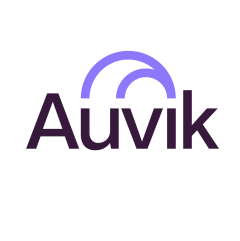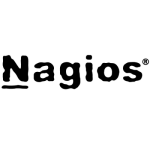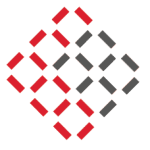What is our primary use case?
We use it to onboard new clients to get a baseline idea of what their network looks like and a picture of what we potentially need to upgrade or replace or get rid of entirely. And for existing clients, we use it for network troubleshooting to figure out if there are any loops in the network or, if we're seeing high packet spikes on specific interfaces, to track down the lags in the network.
We use it for small business networks, mainly SonicWall firewalls and HPE networking gear.
How has it helped my organization?
Auvik has helped us diagnose a lot of really painful network issues. We left it because it was a little too pricey for us at the time, but over time we realized the amount of labor involved in diagnosing even the smallest of network loops or broadcast storms is impossible without a tool like Auvik. It has taken some of our network problem-solving tickets from 10 to 15 hours down to two or three hours. We eat the cost of Auvik and, frankly, it's worth every penny in that regard.
We are also now delegating tickets for the network, moving more tickets to our tier-two engineers from our tier-three engineers.
What is most valuable?
Something Auvik does really well is provide a single integrated platform. That's very important for us as a managed service provider. We really need single-pane-of-glass for all of our programs. Auvik makes it super simple to have sub-tenants and you can then view high-level details from the "parent" tenant, which is our MSP interface, while also diving deep into the client-side and having full access there for assigning client-level permissions. For our co-managed clients, we can get their engineers in alongside our engineers to both view and manage the data.
Another great part of the platform is that it helps keep device inventories up to date. That's where we get an initial map of the network during client onboarding. We can then use that over time and say, "Okay, this switch is hitting the warranty." Auvik can detect the serial number and check the warranty status. We can prompt ourselves to call the client and say, "Hey, we should replace this before you run out of service." To an extent, this feature has created more work for us, but it's work that we need to do. It's notifying us that these things are expiring when, previously, we just didn't know. It's saving us the time of manually checking, but we weren't necessarily doing that consistently before Auvik.
What needs improvement?
The visualization of network mapping and topology is good, but it's not as customizable as I would like. I'd like to be able to adjust the images that are used for different vendors, for example. There are some improvements that could definitely be made, but it's definitely better than a lot of other programs in the market.
Also, the general feature set could use some work. For network mapping and network alerting, it's great for what it does. But it could provide more monitoring, such as jitter monitoring, which it doesn't have, and round-trip time for packets. I would like to see more network detail on the actual traffic that's flowing through the network. Maybe they could also provide some additional flow support.
It has some room for improvement, but especially since we first used it in 2015, it's come a long way. I'm really excited to see where they go next with it.
For how long have I used the solution?
We started using Auvik in 2015 for about a year. We then left it and just started using it again about six months ago.
What do I think about the stability of the solution?
There haven't been any outages that have affected us. I've seen some status alerts from them saying, "Hey, we're conducting maintenance," or, "Hey, we had an emergency outage," but they have never been at a time when they affected us.
What do I think about the scalability of the solution?
The scalability is fine. It's just a matter of adding new clients. It takes some time for each client, but that's true with every solution. It scales well because, especially once you get the setup down for one client, it's pretty easy for future clients.
How are customer service and support?
Their support is quick to respond. I haven't had to reach out to them for a while now, but when I was reaching out to them during and shortly after onboarding, they were prompt, with same-day or next-business-day response times.
How would you rate customer service and support?
Which solution did I use previously and why did I switch?
Between Auvik in 2015 and now, we were just using the built-in network device mapping of ConnectWise Automate and we just found that wasn't enough. It wasn't efficient and it just missed too much.
How was the initial setup?
The initial setup was straightforward. We just followed the documentation. I had also done it in 2015. Although I didn't remember doing it back then, doing it again was really quick. I got one of our other network engineers involved to help at one point and he picked it up really fast. It's super easy to set up for high-level engineers, but I wouldn't necessarily trust a level-one tech with setting it up to the standard necessary to get it set for future use.
There is definitely some technical knowledge necessary. I couldn't task our tier-one techs, necessarily, with setting it up super quickly, but the documentation is good enough that, as long as you can follow documents, you can get through it. Speed is an issue there. A higher-level network engineer can speed through it really quickly.
The overall intuitiveness of Auvik's network visualization is fairly good, but that's where the configuration side comes in. If you don't configure it well from the beginning, it can be a mess to understand. So you need to have that higher level of knowledge to take care of that. But as long as you set it up right from the beginning, a tier-one tech can go in and look at that network map and see how things in the network are all connected together.
Once the Auvik collector was implemented, it said it would take about 10 minutes to populate the network mapping. I waited about 12 minutes and it wasn't done. I came back about 20 minutes later and it was done, so it took about 30 minutes, at most.
There is much less work in setting up Auvik versus previous solutions we have used. Maintenance consists of periodic checking to make sure all the credentials are still right. It uses usernames and passwords, so if you change your password and you don't update it in Auvik, things will stop working. So we check on that. Also, when you install new devices, they need additional setup in Auvik. It's not a tremendous amount of work, but there is some.
What was our ROI?
Auvik pays for itself. Network monitoring tools are all expensive. They take in a lot of data and they do a lot of processing. If you're hosting it yourself, it's going to be an expensive license. If they're hosting it for you, it's going to be expensive hosting. At the end of the day, unless you're paying employees minimum wage, which you shouldn't be doing, the network monitoring tool is going to save more hours of employee labor than the cost of the software.
We saw value from Auvik within five business days. We were really pushed when we set it up, and we pushed Auvik saying, "Hey, we need this now. We've got a client issue that we need to solve." They got our instance to us quickly, we got in there and got it set up in two or three days and we got that issue solved within five business days of contacting Auvik to get the solution. It was insanely quick.
What's my experience with pricing, setup cost, and licensing?
The pricing is kind of steep, but it's worth the price. There's no beating around the bush. It's an expensive solution, but it's really the best solution there is for us.
Which other solutions did I evaluate?
We did some superficial looking at SolarWinds products and PRTG, and Kaseya has some products, but Auvik, at least in the MSP industry, is our standard. We did the demo and we were sold instantly.
What other advice do I have?
It's fairly easy to use the monitoring and management functions of Auvik. I wouldn't say ease of use is one of our highest priorities. As an MSP, we need to cater to the lowest common denominator in our staff. We need to be able to tell our tier-one techs to at least get into this software to review the data—maybe not configure it—but at least review and understand it. Other tools, like PRTG or Nmap, just give you that data, but you need to be a network engineer to even read through it properly and understand it. Auvik really brings that down so that a junior can review things. Configuration, not as much, but that's not a limitation of Auvik, that's a limitation of network devices in general.
As a cloud-based solution, Auvik works well. The probe sends us a lot of data, but it's all tech-space data. There is constant traffic from your network to the Auvik servers, but it's not gigabytes of traffic data. We haven't had any issues with it. I definitely think that there's value in having an on-prem network solution, both for the sake of security and for being able to have a bit more access to the network than just a probe and then the cloud server architecture, but it works well for what we do.
Disclosure: PeerSpot contacted the reviewer to collect the review and to validate authenticity. The reviewer was referred by the vendor, but the review is not subject to editing or approval by the vendor. The reviewer's company has a business relationship with this vendor other than being a customer: MSP


















